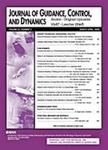版权所有:内蒙古大学图书馆 技术提供:维普资讯• 智图
内蒙古自治区呼和浩特市赛罕区大学西街235号 邮编: 010021

作者机构:California Univ. Los Angeles
出 版 物:《JOURNAL OF GUIDANCE CONTROL AND DYNAMICS》 (制导、控制和动力学杂志)
年 卷 期:1996年第19卷第6期
页 面:1216-1220页
核心收录:
学科分类:12[管理学] 1201[管理学-管理科学与工程(可授管理学、工学学位)] 08[工学] 0804[工学-仪器科学与技术] 0825[工学-航空宇航科学与技术]
主 题:Observability Gramian Eigensystem Realization Algorithm Stiffness Matrices Singular Value Decomposition Second Order Differential Equations Material Properties State Space Systems Viscous Damping
摘 要:Modern off-line system identification methods necessarily form a system realization using a finite amount of data The models constructed are usually of an order smaller than the actual order of the physical system because it is not practical to model the relatively unimportant states. A method is presented to improve the selection of the important states and the model order in system identification methods based on generalized Hankel matrices. When forming a reduced-order model, it is critical to be able to accurately identify the important states and to select the appropriate model order. Some currently popular methods implicitly contain a frequency weighting that comes from the use of a finite time interval of data in the identification. A method is presented to remove this implicit bias, and excellent results are obtained, even when the response data used span only a fraction of a cycle of the dominant frequency.